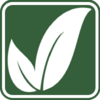| 500Foods shared this story from |
Agronomy, Vol. 10, Pages 1832: Leaf Response to Different Light Spectrum Compositions during Micropropagation of Gerbera Axillary Shoots
Agronomy doi: 10.3390/agronomy10111832
Authors: Monika Cioć Bożena Pawłowska
The experiment evaluated the influence of different light qualities and 6-benzyladenine (BA) concentration in a medium on the leaf response of multiplied Gerbera jamesonii Bolus ex Hook. f.‘Big Apple’ shoots. Three different light-emitting diode (LED) spectra—100% blue (B), 100% red (R) and red and blue mixture (7:3, RB)—were used, and a fluorescent lamp was used as a control (Fl). Concentrations of BA in Murashige and Skoog (MS) medium were 1, 2.5 and 5 µM. Leaves developed under 100% blue light had a lower frequency of stomata and a smaller area as compared with those from plants exposed to light with red in spectrum. Under 100% red light, the leaf area and the frequency of stomata increased along with growing concentration of BA in the medium. The thickest mesophyll was spotted in the cross-section of leaves exposed to the blue LED light. Leaves developed under the 100% red light had the thinnest mesophyll layers. Increasing concentration of BA in the medium resulted in enhanced leaf blade thickness. The cross-section of leaf vascular bundles was only half of that in petioles. The leaves under the LED combinations had larger vascular bundles than those under fluorescent light. The highest level of photosynthetic pigments was noticed in the leaves grown under LED R and RB lights. Our study demonstrated that 2.5 µM BA and a mixture of blue and red light provided by LED improved leaf quality during multiplication of gerbera shoots.

